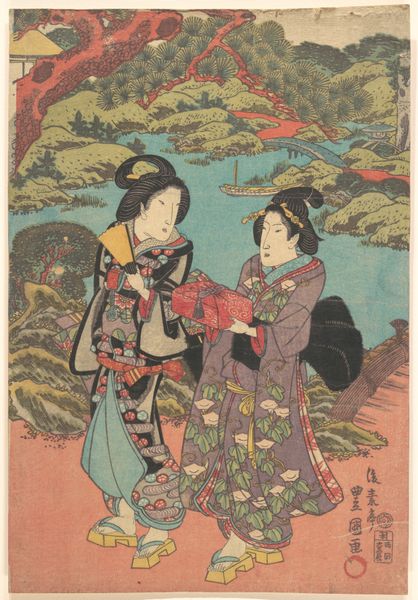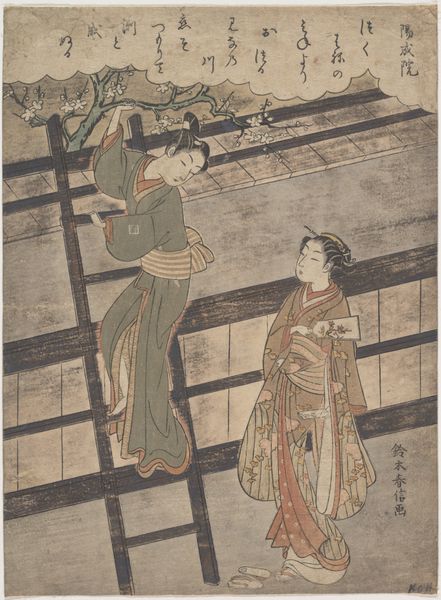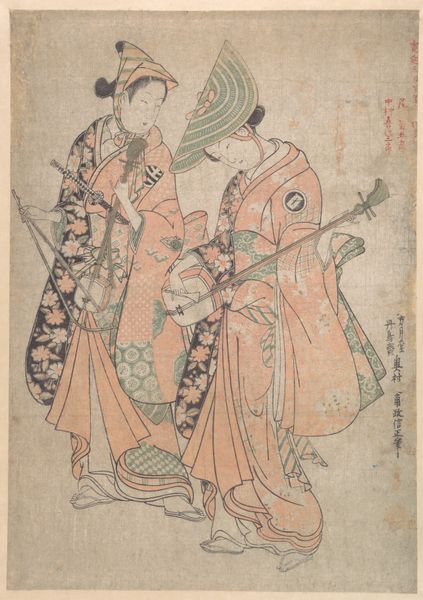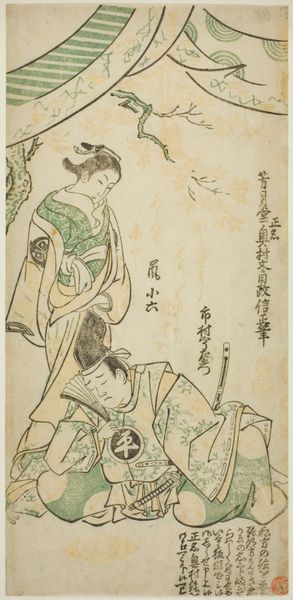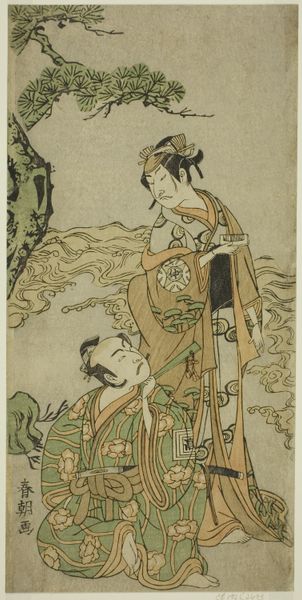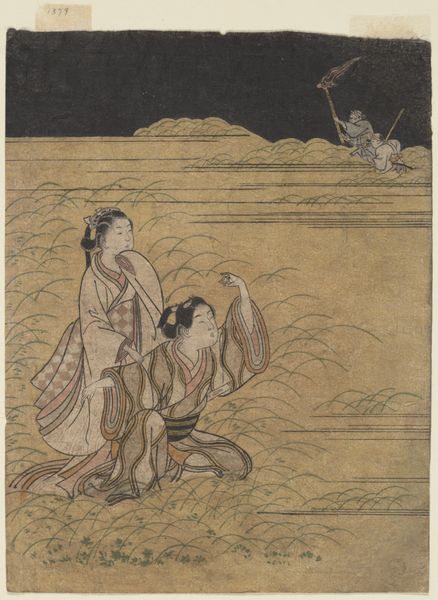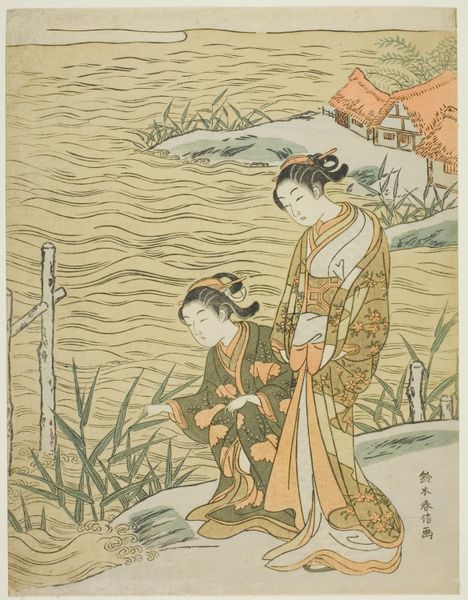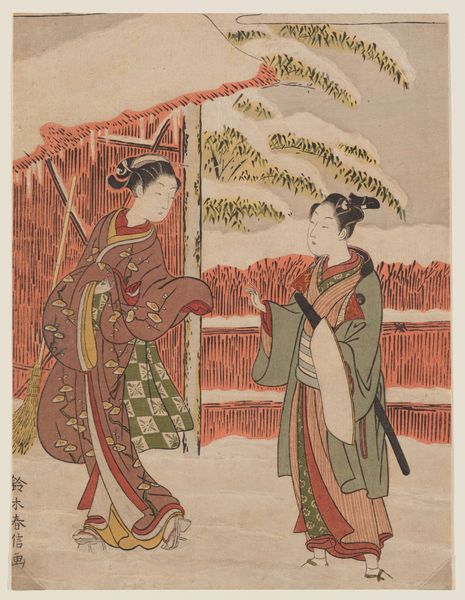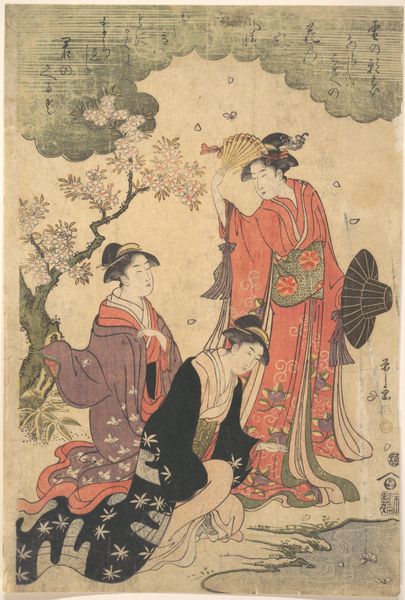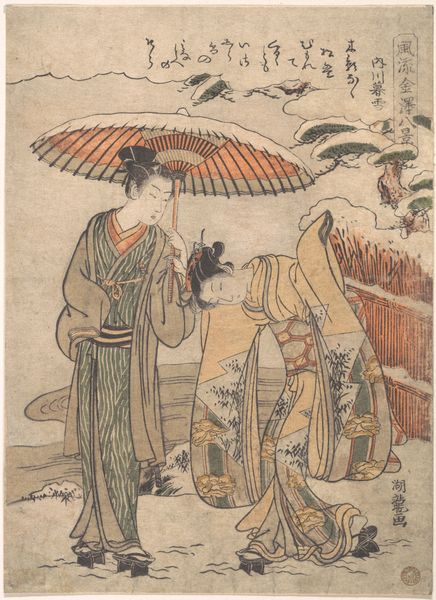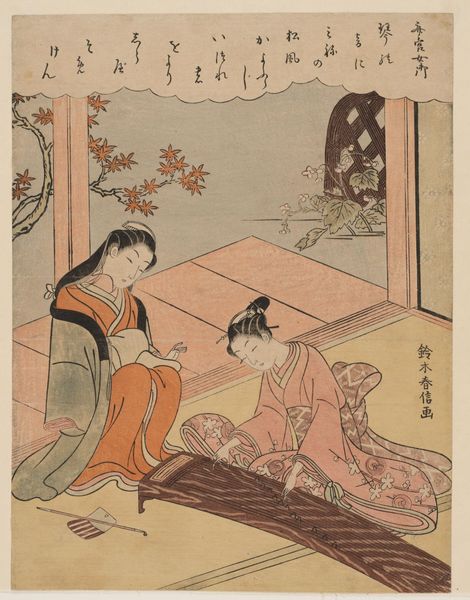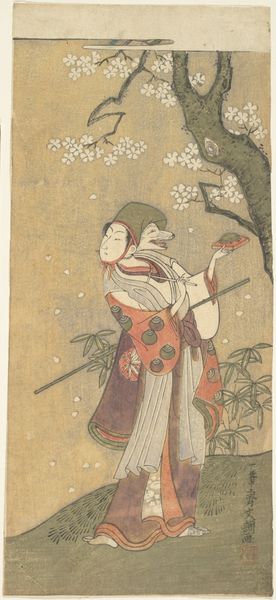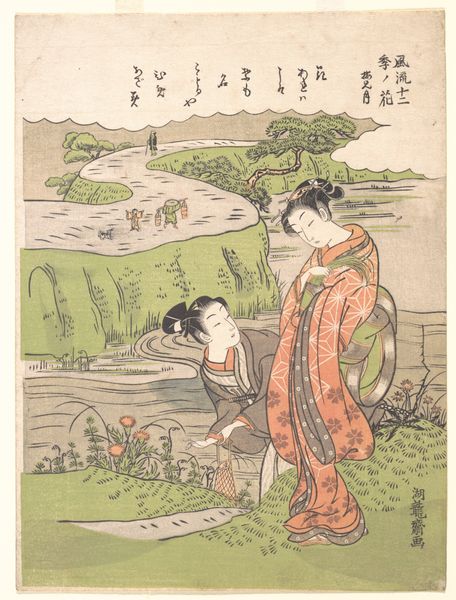
Two Young Ladies at the Shore 1758 - 1778
0:00
0:00
print, impasto
# print
#
asian-art
#
landscape
#
ukiyo-e
#
figuration
#
impasto
#
genre-painting
Dimensions: H. 11 in. (27.9 cm); W. 8 1/2 in. (21.6 cm)
Copyright: Public Domain
Curator: Suzuki Harunobu's print, "Two Young Ladies at the Shore," thought to be created sometime between 1758 and 1778, offers a glimpse into the leisure activities of women during the Edo period. Editor: It has such a tranquil mood. The muted colors and delicate lines create a feeling of quiet intimacy. There’s something about their poses that suggests a moment stolen from the everyday. Curator: These Ukiyo-e prints, translated as "pictures of the floating world", depicted scenes of everyday life, landscapes, and the courtesans and actors who shaped urban entertainment culture. Prints like this reflect a growing merchant class and a vibrant consumer culture in Edo. Editor: It's fascinating how this seemingly simple image encodes so much about societal expectations. What roles were women allowed, how did their attire convey status, and who had access to leisurely escapes like this? The soft rendering almost romanticizes the realities, doesn’t it? Curator: The artistic style certainly contributed to a romantic vision of female beauty and refined sensibilities. Harunobu was instrumental in developing the full-color woodblock printing technique, which allowed for more nuanced and subtle depictions of color and texture. This transformed Ukiyo-e and printmaking production. Editor: And this technical refinement elevated women in Ukiyo-e to a space previously occupied by male characters. Are they simply aesthetic objects, or can we view them as subjects expressing their agency, if even momentarily? How can we resist flattening their personas into mere stereotypes, inviting present-day empathy? Curator: The challenge, as always, lies in balancing historical context with contemporary interpretation. Viewing art is never neutral; these figures exist on a precipice as both products of societal trends and symbols in how people envision the role of women. Editor: A necessary reflection. By approaching artworks through intersectional lens we expand our view to challenge assumptions that have obscured histories that have been historically marginalized. Curator: Thank you for giving more points for interpretation. This way viewers find a closer access for deeper and conscious viewing of the object.
Comments
No comments
Be the first to comment and join the conversation on the ultimate creative platform.
